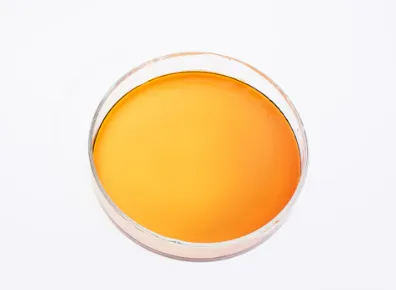
اخبار
مه . 09, 2025 11:30 بازگشت به لیست
Application of Polyaspartic Acid
پلی اسپارتیک اسید is a biodegradable derivative of polyamino acid, which has attracted much attention for its good water solubility, biocompatibility, and environmental friendliness. As a multifunctional material, Polyaspartic acid has shown broad application prospects in various fields, from agriculture to medicine, and then to industry. Its unique properties make it a substitute for many traditional materials. This article will explore the applications and potential of Polyaspartic acid in different fields.

In the field of agriculture, the most significant application of Polyaspartic acid is as a plant growth regulator and fertilizer slow-release agent
نمک سدیم پلی اسپارتیک اسید can enhance plant absorption of nutrients, increase crop yield, and improve crop quality. Due to its excellent biocompatibility, Polyaspartic acid does not cause pollution to soil and the environment, meeting the requirements of sustainable agricultural development. As a fertilizer slow-release agent, Polyaspartic acid can encapsulate fertilizer particles, slow down their release rate, thereby reducing fertilizer loss, improving utilization efficiency, and mitigating negative environmental impacts. This slow release mechanism not only meets the nutritional needs of crops at different growth stages, but also reduces fertilizer waste and lowers agricultural production costs.
In the field of medicine, the application of Polyaspartic acid mainly focuses on drug delivery systems, tissue engineering, and biomaterials
The biodegradability of Polyaspartic acid potassium salt makes it an ideal drug carrier, which can deliver drugs to specific sites, improve therapeutic efficacy, and reduce side effects. Polyaspartic acid can be combined with other biomaterials to construct three-dimensional scaffolds for tissue engineering and regenerative medicine. These scaffolds can simulate the extracellular matrix, providing a suitable microenvironment for cell growth and differentiation, promoting tissue repair and regeneration. In addition, Polyaspartic acid can also be used as a bio adhesive and bio coating for wound healing and surface modification of implants, improving their biocompatibility.
In the industrial field, the application of Polyaspartic acid is becoming increasingly widespread
It can be used as a water treatment agent to prevent the formation of scale and inhibit metal corrosion. نمک کلسیم پلی اسپارتیک اسید can form stable complexes with metal ions, thereby preventing their precipitation and formation of scale. In addition, Polyaspartic acid can also be used as a dispersant and stabilizer in industries such as coatings, inks, and papermaking. Its good dispersibility can improve product performance and increase production efficiency. For example, in the coatings industry, Polyaspartic acid can be used to disperse pigments, improve the color saturation and glossiness of coatings.
In summary, پلی اسپارتیک اسید نمک روی, as a biomaterial with excellent properties, has a very broad application prospect. With the continuous advancement of science and technology, our understanding of Polyaspartic acid will also deepen, and its applications in various fields will become more extensive and profound. In the future, we need to further explore the synthesis methods of Polyaspartic acid, reduce production costs, and develop more new materials based on Polyaspartic acid to meet the needs of different fields and make greater contributions to the development of human society. Further research can focus on improving the performance of Polyaspartic acid, such as enhancing its mechanical strength, chemical stability, and biological activity, in order to expand its application range. At the same time, it is necessary to strengthen the assessment of the biosafety and environmental impact of Polyaspartic acid to ensure its sustainable development.
Polyaspartic Acid FAQs
What is Polyaspartic Acid?
Polyaspartic Acid is an artificially synthesized biodegradable polymer with a structure similar to naturally occurring aspartic acid peptides. It has excellent water solubility and chelating ability, and is widely used in water treatment, agriculture, medicine, and environmental protection fields.
What are the main functions of Polyaspartic Acid?
Scale inhibitor: can inhibit the formation of scales such as calcium carbonate and calcium sulfate in water systems.
Dispersant: used to prevent particle aggregation in industrial circulating water or detergents.
Corrosion inhibitor: protects metal surfaces from corrosion.
Fertilizer enhancer: improves nutrient utilization efficiency and reduces agricultural pollution.
Why is Polyaspartic Acid considered an environmentally friendly material?
Due to its ability to be degraded by microorganisms and ultimately broken down into carbon dioxide, water, and ammonia, it does not persist in the environment. Compared to traditional scale inhibitors (such as phosphorus containing compounds), it is more environmentally friendly and in line with the concept of green chemistry.
What are the applications of Polyaspartic Acid in agriculture?
As a fertilizer coating or additive, it can delay nutrient release, reduce loss, improve the absorption efficiency of nitrogen, phosphorus, and potassium, and improve soil structure, making it particularly suitable for sustainable agriculture.
What are the synthesis methods of Polyaspartic Acid?
Heat shrink polymerization method: Heat and polymerize L-aspartic acid, and then hydrolyze it to obtain.
Enzyme catalyzed method: Through biological enzyme catalyzed reactions, the conditions are milder but the cost is higher.
Heat shrink polymerization is commonly used in industry due to its simple operation and high yield.
-
Why Iminodisuccinic Acid Salts Are Revolutionizing Industrial Cleaning
اخبارJul.28,2025
-
The Role of Polyaspartic Acid Salts in Sustainable Agriculture
اخبارJul.28,2025
-
Polyaspartic Acid in Agriculture: A Revolutionary Solution for Sustainable Farming
اخبارJul.28,2025
-
Iron Chelating Agents: Understanding Their Role in Treating Iron Overload Disorders
اخبارJul.28,2025
-
Innovations in Gypsum retarder Retarders: From Chemical to Organic Solutions
اخبارJul.28,2025
-
How Polyaspartic Acid Salts Are Replacing Toxic Industrial Chemicals
اخبارJul.28,2025
